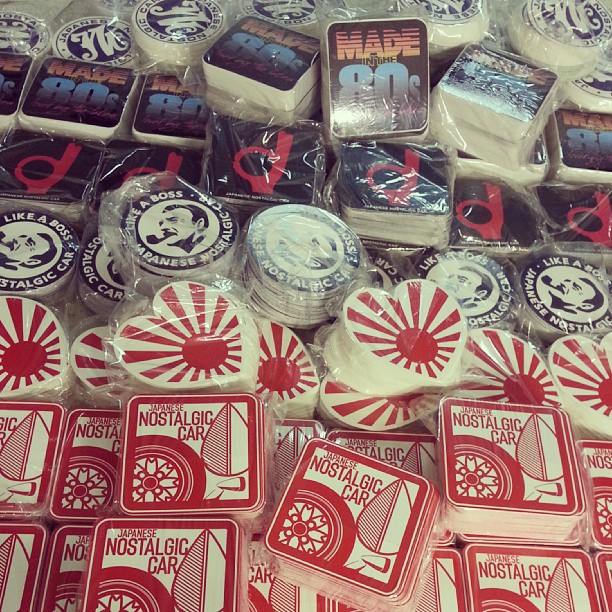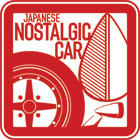We suspect that one of the reasons you are here on a site about Japanese cars is because you appreciate how finely crafted they are. Attention to detail, thoughtful designs and innovations, and long-lasting quality are all hallmarks of Japan’s long tradition of making things. Today, October 20, is Long-Lasting Company Day, in which Japan celebrates shinise, or companies that have existed for 100 years or more. Japan has the most shinise of any country in the world, over 33,000 of them. And according to a study of companies older than 200 years, Japan leads the world with 15 percent of them. There are lots of Japanese goods other than cars to appreciate, whether it’s food, video games, carpentry, or any number of things.
What other forms of Japanese craftsmanship do you hold in high regard?
The most entertaining comment by next week will receive a prize. Scroll down to see the winner of last week’s QotW, “What’s the best tow vehicle?“.
The correct answer for best tow vehicle will depend on what it is you’re towing. For the absolute best option to move a car, Lavender Null‘s Isuzu cabover rollback tow truck seems like a solid option, if not overkill. Similarly, to haul a boat, Negishi no Keibajo‘s 1998 GMC 1-ton flatbed is the prime choice.
The next tier down includes a truck with a Cummins diesel, as suggested by Lavender Null and Taylor C. That was followed by any full-size Detroit pickup, as nominated by BlitzPig and JJ. Answers will vary by region as well, as we’ve seen some brave Europeans towing an entire double-axle trailer or caravan with a regular-ass car. Australia is closer to us in this regard, as ynori says it has to be at least a V8 4×4. However, streetspirit points out that even a unibody crossover like a ZJ Jeep Grand Cherokee may be good enough to tow a kei car or five. Last but not least, Jim Klein‘s sage advice says that the best rig is a truck belonging to friend who insists on doing it for you.
The winner this week was Marco Maestro, who named his 100-series Lexus LX470 equipped with Active Height Control, a pick seconded by DC:
I shall nominate my LX470. She’s an ‘07 with VVTi, so a tad more grunt than earlier years of the 100 series, and she has the AHC suspension, which self-levels once I hook up to the camper. I’ve towed a vintage 18’ camper from California to Maine and back three times, and she’s been rock solid. Not a ton of pulling power, so it’s slow and steady up over the Rockies, but the AHC in Buick-mode makes the drive cushy, comfy, and after 6-days at the helm, I don’t arrive feeling exhausted or worn out at all. She’s not exciting to drive in the least, but she’s big and heavy, which inspires confidence , she’s powerful enough, and supremely comfortable. An ideal recipe for miles of trouble-free and stress-less towing. I can also lower the AHC to drop the ball out of the hitch to disconnect. Pretty ideal overall.
Omedetou, your comment has earned you a set of decals from the JNC Shop!









I am a big fan of Japanese made items, I think they have the highest quality standards of anywhere in the world. apanese made bicycles are my current addiction, especially mid to late eighties Miyata brand road bikes with the triple butted splined tube frames. They not only look great with beautiful paint jobs and fit and finish but they ride different then any of the other manufacturers from the same time frame. You can just feel the difference!
Japanese rice cookers have perfected the art of industrial design in a single product. They are intuitive to use, cook rice perfectly, and for such a simple appliance mange to look good sitting on a kitchen counter.
Knives. Like cars, had an Asian knofe but went through a period where only Euro models got my attention. Then one day decided I’d try a high end Japanese one. A very expensive carving one. Haven’t looked back and since then, went on to gather up several more that occupy my garag…. er, my chopping block. But don’t ask me about buying an electric model.
Hand tools.
My father-in-law has a quarter million dollars worth of Snap On accumulated over a life time as a pro mechanic, and they’re all amazing, heirloom-worthy tools without exception. But, KTC, Vessel, Koken, Tone, Engineer, Asahi, even jewelry-like Nepros, all undercut that brand in price by significant margins while offering near- (if not greater) equivalent quality, ergonomics, finish, functionality, and durability.
I have maybe $5,000 invested in my modest collection of Japanese hand tools, which would have cost me perhaps $15,000 or more if I went for Snap On.
Totally agree. Particularly about Nepros (KTC), Koken, and Tone. I would also add my favourite pliers brand: Tsunoda.
Fujiya and Lobtech make some really nice nippers and pliers, too, though in this area I usually default to German Knipex for their amazing functionality and very good quality.
I know Nepros is to KTC what Lexus is to Toyota, but I put them here separately because their lines and price points are quite distinct from each other. I love me some Nepros, but I lean towards KTC because functionality and price are higher priorities than mirror-like finish and leather handles.
My two Vessel ball grip screwdrivers are my favorite tools own!
Clothes. I’ve found that the fit of quality Japanese clothes tends to makes me look my best, and the quality is outstanding for a lot of the brands. I will choose 2 of my favourite pieces to highlight here: Works Iron Heart XHS 25oz denim jeans, and Tanuki Heavy Shirts.
Japanese woodworkers. Full stop. Check out the insane plane competitions.
https://www.youtube.com/shorts/Ote2Yo_PNSE
I can’t narrow it down to any single form of craftsmanship, there’s just too many, but I will go along with woodworkers, and would like to cite this example… My brother-in-law’s family runs a woodworking/carpentry company. True quality craftsmanship in the form of wood joinery without nails. They’ve been in business for close to 15 generations… something like 350 years. They make products for shrines and temples across Japan. They call Ise (Mie Prefecture) home, and they’ve been servicing the needs of Ise Jingu (considered the most sacred of Shinto shrines in Japan) for generations. They also have been providing their crafts and services to the Royal family for just as long.
Over the past three years I’ve really come to appreciate the craftsmanship of Japanese instruments. I’ve been a guitar player since a young lad, and being steeped in the world of Fender, I’d always held the US-built guitars as the zenith of the craft. It wasn’t until, as an adult, I’d had the wherewithal to dive into the history of the Fender Japan factories (a la FujiGen Gakki) and how incredible their manufacturing was…well-surpassing anything we were building here on the home turf at the time of their opening. I’ve had the chance to own one of those Japanese made Strats from the 80’s, and I have not played a finer instrument since. I don’t own a MIJ (Made In Japan) Fender anymore, but that one guitar will forever be THE standard I’ll measure against.
A link for anyone interested!
Perhaps a popular idea is culinary craftsmanship. The combination of both rich and savory flavors, in addition to most of the foods being affordable, is what makes me love Japanese cuisine.
There’s one ramen chain that follows a nice policy- Ramen is a poor man’s food, thus it’s up to us (the chefs and restaurants) to cater to the customers and make an affordable, yet delicious meal that will not disappoint the masses. To this day, their ramen costs under ¥1000.
nips and their reputation for small things, tiny things, and like, fully functional too down to ridiculous scales. ever put together a model kit like a master-grade gundam? not only do those have fully articulated internal frames with complete mechanical details. they are also snap-fit – i.e. no glue required. can you even begin to imagine the engineering involved and precision tooling required to produce them.. like material, geometry, structural etc.?! many components are just millimeters wide, and for over 2 decades and many dozens of kits that i have been building them, i have never encountered a single defect or tolerance error. modern bleeding edge craftsmanship at its finest.
want another tiny toy but higher pay grade? also try japanese watches.
and to show my appreciation for tiny japanese things i have a 1/61 tomica yaris cross sitting on the dash… of my yaris cross. in the same colour too. it sure does draw amusing reactions from my occasional passengers
I’m not really a watch guy, but Seiko watches from the 60s-80s are kind of the sweet spot of good looking, relaible, and affordable. I’ve got a 6139 Pogue from 1969 and I think it’s the coolest watch ever made.
Three names. Casio, Tomica and Minolta. (Digital watches, model cars and cameras).
My immediate comparison between Japanese and non-Japanese products are the model cars. My first model car was a Tamiya 1/24 Lamborghini Countach LP500S, and building that model got me hooked. The local Longs Drugs had other type of plastic models, from planes to tanks to cars, and cars were always on my radar. I think my dad bought me one of those Revel-branded cars, and out of the box I could see and feel the difference in quality. The tires were not realistic, the details were lacking, and the overall completed model didn’t sit as “realistically” as the Tamiya branded variants. I remember my uncle bought me a Tamiya Harrier Jump Jet model, and shortly after building that, I tried a Monogram Tomcat, and again, the difference in quality / detail was evident between the two.
Japanese bike parts/components have high quality functionality, reliability, and aesthetics. They aren’t world tour lightweight race spec. parts but for a weekend cyclist they are very good. Japanese companies that I buy from are Shimano (groupsets), Sugino (cranksets), Nitto (handlebars, stems , & seatpost), MKS (pedals), Izumi (chains), Dia Compe (hubs & brake components), Yokozuna (brake parts), and Kamoya (folding bike). After buying the Japanese parts then going to the bike store, you will notice all the no-name generic components major bike brands include on their bikes. The look and feel of the Japanese parts is a level above most other bike parts.
My house is full of Casio watches, Sony cassette players, stereos, and speakers, Gundam model kits, and of course plenty of Tomica diecast cars!
Japanese built guitars are the best